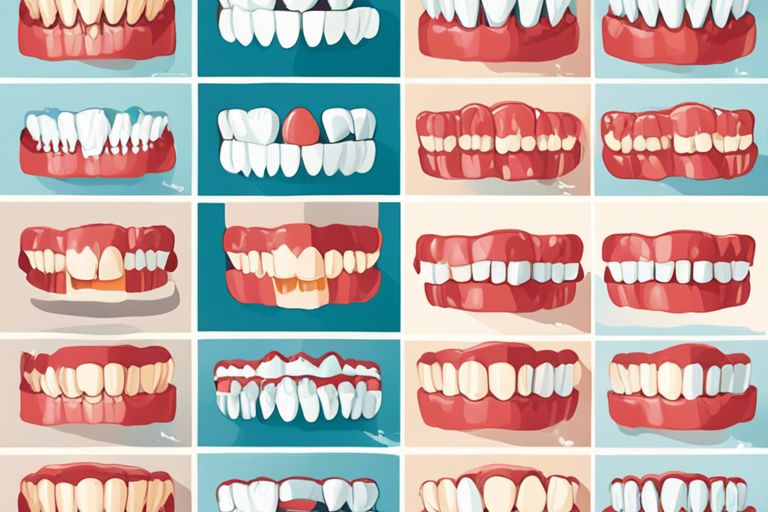With the advancement in dental technology, clear aligners have revolutionized the way teeth are straightened. When you begin on this orthodontic journey, your clear aligners will work their magic by gently shifting your teeth into the desired position. Through a series of custom-made aligners, you will witness the gradual movement of your teeth, resulting in a beautifully aligned smile. Understanding the process of tooth movement with clear aligners will empower you to embrace this modern solution for achieving the smile you’ve always dreamed of.
Key Takeaways:
- Clear aligners use gradual force: Clear aligners work by applying gradual and consistent force to move teeth into their desired position over time. This process is achieved through a series of custom-made aligners that are switched out every few weeks.
- Removable and convenient: Unlike traditional braces, clear aligners are removable, making it easier to maintain good oral hygiene and enjoy your favorite foods without restrictions. However, it’s important to wear them for the recommended 20-22 hours a day for optimal results.
- Regular monitoring is crucial: Throughout the treatment process, it is vital to have regular check-ups with your orthodontist to ensure that your teeth are moving as planned and to make any necessary adjustments to your treatment plan.
The Science Behind Clear Aligners
While clear aligners may seem like a modern solution to straightening your teeth, the science behind them has been around for a while. The concept of orthodontic treatment, which is what clear aligners are based on, involves moving your teeth into the correct position to create a well-aligned smile.
How Orthodontic Treatment Works
Aligners work by applying gentle pressure to your teeth, causing them to gradually shift over time. This process relies on the principle of bone remodeling, where pressure applied to the teeth causes the surrounding bone to change shape. As the bone adjusts, your teeth move into their new, desired positions.
The Role of Clear Aligners in Tooth Movement
Orthodontic treatment with clear aligners is designed to address various concerns such as crowding, spacing, and misalignment of teeth. The aligners are custom-made to fit your teeth snugly and are usually changed every few weeks to keep the tooth-moving process going. Each set of aligners is slightly different, exerting specific pressure points on your teeth to facilitate movement.
The clear aligners play a crucial role in tooth movement by providing a controlled, gradual shift of your teeth without the need for metal brackets and wires. This innovative approach allows for a more discreet and comfortable orthodontic treatment experience while still achieving the desired results of a straighter smile.
The Process of Tooth Movement
If you’re wondering how clear aligners work to straighten your teeth, it’s necessary to understand the process of tooth movement. This intricate process involves bone remodeling, tooth resorption, and the role of the periodontal ligament.
Bone Remodeling and Tooth Resorption
For bone remodeling and tooth resorption to occur, pressure needs to be applied to the teeth. When you wear clear aligners, they gently exert pressure on specific teeth to gradually move them into the desired position. As a result of this pressure, the bone surrounding the teeth undergoes a remodeling process. The bone on the side where the tooth is moving towards gets resorbed, while new bone is formed on the opposite side to support the tooth’s new position.
Periodontal Ligament and Tooth Movement
For tooth movement to take place successfully, the periodontal ligament plays a crucial role. This ligament is a fibrous tissue that connects the tooth to the jawbone and helps anchor the tooth in place. When pressure is applied to the tooth, the periodontal ligament is compressed on one side and stretched on the other, initiating a cascade of cellular events that lead to tooth movement.
Periodontal ligament cells called osteoclasts and osteoblasts are responsible for bone resorption and formation, respectively, contributing to the overall process of tooth movement. As the tooth shifts, the periodontal ligament continually remodels itself to support the changing tooth position, allowing for controlled and precise movement.
How Clear Aligners Apply Force
Once again, clear aligners work by applying gentle pressure on your teeth to gradually shift them into the desired position. This process of controlled movement is key to the effectiveness of clear aligner treatment.
Gentle Pressure and Controlled Movement
Pressure is applied to specific teeth through the clear aligner trays. Each set of aligners is slightly different from the last, which helps in exerting precise force on targeted areas of your teeth. This gentle pressure gradually moves your teeth in a controlled manner, ensuring the process is comfortable and minimizes pain.
The Importance of Incremental Movement
Apply pressure is incrementally important as it allows your teeth to adjust gradually to the new position. Sudden or excessive force can damage the roots of your teeth or lead to other oral health issues. By making small adjustments over time, clear aligners help in achieving the desired results safely and effectively.
Importance of incremental movement is underscored by the fact that it reduces the risk of complications and discomfort during your clear aligner treatment. Moving teeth slowly also allows for better control over the entire process, leading to more predictable and successful outcomes.
The Role of the Dentist
Keep in mind that while clear aligners are a convenient and effective option for straightening your teeth, the role of the dentist is imperative in ensuring the success of your treatment. Your dentist plays a crucial role in overseeing your progress, making adjustments when necessary, and ultimately helping you achieve the smile you desire.
Customized Treatment Planning
Any successful clear aligner treatment begins with a customized treatment plan developed by your dentist. During your initial consultation, your dentist will take detailed impressions, x-rays, and photographs of your teeth to create a 3D model of your mouth. This model allows your dentist to map out the precise movements your teeth need to make in order to reach the desired alignment.
Monitoring Progress and Making Adjustments
Role of your dentist doesn’t end with the initial treatment plan. Throughout your clear aligner journey, your dentist will monitor your progress at regular check-up appointments. They will ensure that your teeth are moving according to the plan and make any necessary adjustments to the aligners to keep your treatment on track. Your dentist’s expertise and guidance are crucial in ensuring that your teeth move gradually and safely into their desired positions.
This ongoing monitoring allows your dentist to make any necessary tweaks to your treatment plan to ensure that your teeth are shifting correctly. Your dentist will also provide guidance on how to care for your aligners and maintain good oral hygiene throughout the treatment process. By working closely with your dentist, you can achieve the best possible results with your clear aligners.
The Patient’s Experience
Many patients who choose clear aligners for orthodontic treatment find the experience to be comfortable and convenient.
Wearing Clear Aligners: Comfort and Convenience
To begin your journey with clear aligners, your orthodontist will create a customized treatment plan for you. You will receive a series of aligners that are to be worn for about 20 to 22 hours per day, only removing them when eating, drinking, or performing oral hygiene routines.
Maintaining Oral Hygiene During Treatment
Treatment with clear aligners requires diligent oral hygiene practices to keep your teeth and aligners clean. You should brush your teeth after every meal and before reinserting your aligners to prevent food particles from getting trapped.
Patients are advised to floss regularly to remove plaque and debris that can accumulate between teeth. Additionally, using an antiseptic mouthwash can help reduce bacteria in the mouth and prevent odor while wearing aligners.
Overcoming Challenges and Limitations
Despite the many advantages of clear aligners in straightening teeth, there are some challenges and limitations to consider during the treatment process. One common challenge is dealing with complex cases that may require more precise tooth movements and adjustments. In some instances, traditional braces may be more suitable for such cases where greater force or control is needed for effective tooth alignment.
Dealing with Complex Cases and Root Movement
Challenges can arise in cases where extensive root movement is necessary for proper alignment. Clear aligners are primarily designed to address tooth displacement rather than large-scale root movement. In such situations, your orthodontist may recommend alternative treatments or a combination of clear aligners and other orthodontic appliances to achieve the desired results.
Managing Patient Compliance and Expectations
With clear aligners, patient compliance plays a crucial role in the success of the treatment. It is important to wear the aligners for the recommended duration each day and follow your orthodontist’s instructions diligently. Failure to comply with wearing the aligners as prescribed can prolong the treatment time and affect the final outcome.
The key to managing patient compliance lies in setting realistic expectations from the beginning of the treatment. Your orthodontist will guide you on the importance of following the treatment plan accurately and the potential consequences of not adhering to the prescribed schedule. By understanding the significance of your role in the treatment process, you can ensure a smoother and more successful outcome with clear aligners.
Summing up
Hence, understanding the process of tooth movement with clear aligners can demystify the treatment and help you make informed decisions about your dental care. As you initiate on this journey towards a straighter smile, remember that consistency is key to achieving the desired results. By following your orthodontist’s recommendations and wearing your aligners as directed, you can effectively shift your teeth into proper alignment and enjoy a beautiful, healthy smile.
FAQ
Q: What are clear aligners?
A: Clear aligners are a type of orthodontic treatment that involves wearing a series of clear, removable trays to gradually move your teeth into the desired position.
Q: How do clear aligners work?
A: Clear aligners work by applying gentle pressure to specific areas of your teeth, causing them to shift gradually over time. Each set of aligners is slightly different to continue the movement process.
Q: What is the process of tooth movement with clear aligners?
A: The process of tooth movement with clear aligners involves several steps – consultation with an orthodontist, receiving a customized treatment plan, wearing the aligners for 20-22 hours a day, switching to a new set of aligners every 1-2 weeks, and regular check-ups to monitor progress.







